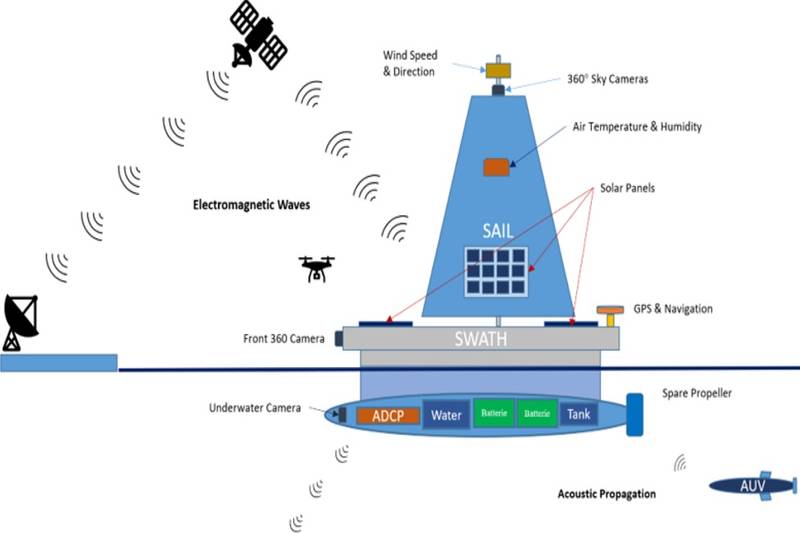
February 16, 2025
First author of the study is Wenqiang Xu, Ph.D., a doctoral degree graduate of FAU’s Department of Ocean and Mechanical Engineering. (Source: FAU)
Long-term data collection is needed to understand Arctic marine ecosystem changes as sea ice melts in response to climate change.
However, direct observation is challenging as satellite sensors have a coarse spatial resolution and cannot detect the fine fractal structure of the ice. Deploying human-crewed ships to the area also is difficult due to extreme weather conditions and risks posed by floating broken ice. Moreover, traditional ocean observation methods offer limited temporal and spatial coverage, while drones and AUVs are hindered by energy constraints that restrict their research potential.
To overcome these challenges, researchers from the College of Engineering and Computer Science at Florida Atlantic University have proposed a design of an alternative, autonomous observational method that features a small waterplane area twin hull (SWATH) vessel that acts as a docking and charging station for AUVs and UAVs.
The SWATH ship is engineered for exceptional stability, allowing it to navigate through melting ice and operate in a wide range of sea conditions. It is designed to be self-sufficient, utilizing automated sailing, solar panels and an underwater turbine positioned between its twin hulls to generate and store energy, ensuring continuous mission support even when sailing against ocean currents.
Results of the study, published in the journal Applied Ocean Research, show that using the motion of a wind-driven sailboat to generate power from the turbine beneath the SWATH is a feasible way to support long-term Arctic Ocean monitoring missions.
The UAVs use high-resolution cameras and sensors for mapping and navigation, while AUVs gather underwater data. The DJI Dock 2 system enables UAVs to autonomously land, recharge and redeploy, while an advanced underwater docking system allows AUVs to refuel and transfer data, extending their range. Survey instruments in the underwater hulls collect mission-specific data, which is processed onboard and transmitted via satellite, enabling long-term, unmanned ocean monitoring.
“Our researchers have developed an innovative observation system tailored to the Arctic environment, offering critical data on sea ice melt that satellites and manned vessels are unable to capture. Long-term monitoring is essential, as it provides deeper insights into the lasting impacts of Arctic sea ice loss, which can guide informed policy and management decisions,” said Stella Batalama, Ph.D., dean of the FAU College of Engineering and Computer Science. “Additionally, there remains much to uncover about Arctic phytoplankton and algae, which play a crucial role in the food web and influence ocean-atmosphere interactions. This new system could enhance our scientific understanding of their ecological significance while supporting Alaska’s indigenous communities in adapting to future changes in wildlife and food resources.”
Researchers from the University of Konstanz and the Max Planck Institute of Animal Behavior in Germany have worked out a…
Lloyd’s Register (LR) has granted Approval in Principle (AiP) to Brazilian company TideWise for its 24-metre uncrewed surface vessel (USV)…
Chase, probe, embrace, flex, push. It’s probably too much information, but that is how krill mate.The behavior was recorded…
In 2024, annual average global air temperatures surpassed 1.5 degrees Celsius above pre-industrial levels for the first time…
Energy technology company Baker Hughes has launched its new all-electric subsea production system, the industry’s first fully…
PODCAST: Fascinated by Shipwrecks – Episode 7 – Guest: Dr. Art Trembanis, University of Delaware According to marine scientist…
Marine Technology Reporter is the world’s largest audited subsea industry publication serving the offshore energy, subsea defense and scientific communities.
Marine Technology ENews is the subsea industry’s largest circulation and most authoritative ENews Service, delivered to your Email three times per week
Subscribe for MTR E-news

More Stories
Community Snapshot—October
2025 Postel Awardee David Clark, an Architect and Implementer of the Internet
Making Internet Policy Make Sense—Your Multilingual Guide to the Internet